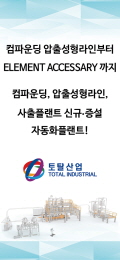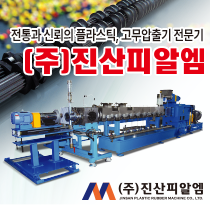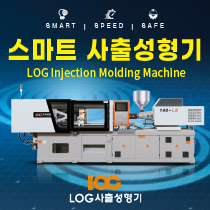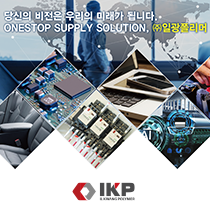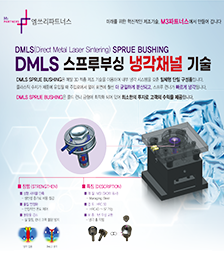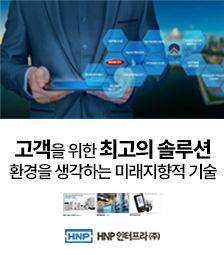Business & people
Autodesk Interview - Additive Manufacturing Product Specialist, Peter Rogers
From June 28 to 30, one of the largest 3D printing events in the world, “2017 Inside 3D printing Conference & Expo” was held at KINTEX exhibition center in Korea. At the international conference which focused on digital manufacturing innovation, Peter Rogers, the additive manufacturing product specialist at Autodesk, gave a speech on “Success with Metal AM: Software’s Role” and “The Future of Metal AM.” During the interview with Handler at the event, Peter shared ideas about additive manufacturing, and introduced Autodesk’s 3D printing software, Netfabb, including its innovative generative design feature which will be released this August.
![]()
▲ Peter Rogers, the additive manufacturing product specialist at Autodesk
Do you often visit Korea or other Asian countries?
Yes, I live in Tokyo in Japan, and look after the entire APAC countries in between India to New Zealand. Parts of my region are China, Korea, Japan, Singapore, and Malaysia. Most of the time, I visit those countries in my area to speak with clients, or speak with companies that are going to be integrating 3D printing. Quite often, we also go there to take events like Inside 3D printing. This exhibition is a major one, and last week, I was at DMS(Design Engineering & Manufacturing Solutions Expo), one of the biggest Japanese manufacturing events. This November, I will visit Germany to attend formnext, the largest metal 3D printing event.
What would you like to deliver to Korean audiences in Inside 3D Printing Conference?
At the moment, Korean audiences are still new to the idea of 3D printing. They have been doing a little bit of rapid prototyping, but have not started to use 3D printing for manufacturing. More desktop machines are in early stages, but a lot of the large industrial machine players like EOS and 3D Systems are attending this event which I think highlights that a lot of big companies also see Korea as a big potential market. Still, it is small, so we are just waiting for it to explode. I have big expectations on the Korea market. I think there will be lots of growth. Now, everyone is just thinking about integrating additive manufacturing, and with the government’s push to support improvements to the software, hardware and materials aspects of the industry, it is moving in the right direction. However, the big companies like Samsung and Hyundai need to lead the way to start the trend.
At this stage, I think it is all about education. They do not see the value, so if we can go in and show them how to make 3D printing useful technology, they can understand the value, increase the part efficiency, and production capabilities. I think it is just the matter of time.
Are you planning to attend or exhibit in events like Inside 3D printing in the future?
This September, HankookDelcam will exhibit software in collaboration with Autodesk at their UGC(User Group Conference). In Korea, HankookDelcam is our partner, which is our master reseller of not only Netfabb, Autodesk’s 3D printing software, but also our CNC software, Delcam. They have a big market share of CNC technology in Korea. In their UGC, a lot of people attend, so it is a great opportunity for us to show Netfabb. Also, we are going to attend KAMUG(Korean Additive Manufacturing User Group), and I will also be presenting at this conference.
When did Autodesk start distributing 3D printing software like Netfabb to the market?
Autodesk has been making software for many years, but they acquired the additive software, Netfabb, 2 years ago. As fully integrated Autodesk solution, it was released mid last year in Asia. Before that, Netfabb had been as a separate company from Germany, but it became a part of Autodesk solution after we purchased it. We have developed this software after the acquisition, so now we have many different products in Netfabb. Before, it was a simple data and build preparation technology, but now we have added optimization, simulation, hybrid manufacturing(which has CNC and additive manufacturing features), and a wide range of other new functionality. Autodesk has a big portfolio. It takes all of the good features from other Autodesk products, and bring them together. As a result, Netfabb becomes much more advanced.
![]()
▲ Autodesk 3D printing software, Netfabb
Could you tell me the strengths of Netfabb?
The key strength is that it is end to end. Most of the software that is available is taking care of one part of the process. Now, we have the capability to do everything from CAD import to post processing. It includes importing and repairing the file, optimizing, creating the support materials, and simulation.
Simulation is the biggest functionality at the moment. For additive metal, if you are making laser sintered parts, the part changes shape easily, because it is shooting a very hot laser onto a powder material which can be quite unstable. We call it distortion. Also, it can cause the part to fail easily. This simulation can tell you whether the part will be successfully printed.
In terms of optimization, there are design for additive manufacturing functions, topology optimization, lattice optimization, and generative design.
Generative design will be one of the biggest releases from Autodesk this year, and it will be coming out very soon. From next month, we have generative design as a part of Netfabb product as a tech preview. Using the feature, you don't need to design the part. You just put in parameters. For example, if you are trying to create a chair, you put the area that you need to have for the person to sit, and the amount of load, maybe maximum 100kgs. On the back, you have backward push of 50kgs, and then the rest is just empty. And the software creates design for you. It is computer-generated design. Because we have strong capabilities on simulation, understand the materials, and are strong at design, we can create unique software that uses AI and the cloud to generate many different design options. Therefore, the design will be unique. At the moment, the key problem of additive manufacturing is that people cannot think of the new design, because they have already predefined ideas of what the product should look like. This is a way to remove all of the thoughts about what it should be, and just make the design based on what the goal and purpose of the part is, and create design without any preconceived ideas.
![]()
▲ Peter Rogers is giving a speech on“Success with Metal AM: Software’s Role” and “The Future of Metal AM” in 2017 Inside 3D printing Conference & Expo.
During the conference, you emphasized on design in additive manufacturing. What can users do to improve it?
Additive manufacturing allows them to have complete design freedom. You can create any design which is impossible with CNC or molding. Latticing, topology optimization is very difficult to do with the traditional technology, but designers and engineers now have been working with the same technique for decades. They need to change the way they think, but creating designs is a time-consuming and difficult process. If you create lattice design in CAD, it takes a long time. Therefore, what the software can help with is automating the lattice placement into the internal structure, and creating the lattice on the external structure. You don’t need to be a heavy CAD user. As long as you have the design, you can optimize it easily. You just select the part, define the settings for the lattice, and push execute, and then it creates the part with the lattice for you. Even though it might be more expensive to produce, you get much better long-term returns, because it is more effective for the life of the product.
We also have mechanical simulation which allows you to ensure the latticing will be suitable for the end use. Sometimes, you will need to have thick or thin lattices based on the stress inside of the part. We simulate that stress, thicken certain sections, and thin other sections to make it optimized for the usage of the part.
![]()
▲ Lattice surface optimization(Photo: Autodesk)
The strength of the metal 3D printed product is still weaker than the one conventionally manufactured. What do you think how we can solve it?
One of the ways we are seeing the big increase in the strength of the part is by changing the geometry. The material properties have quite a lot of impact on the strength of the part, but if we can change the geometry, we can make plastics to be almost as strong as metals. There is a lot of information that suggests the strength properties of the part can be changed by geometry. If we can create interesting geometry that has not been possible with traditional manufacturing, we can capture unique shapes, and increase the strength of the part. Lattices help to absorb forces, because there are the internal sections that can help to cushion the forces. For example, with Airbus, we created the Bionic partition for their airplane. We did generative design on this, and created a topology optimized and latticed design. It was stronger than the original part which was 100% metal, and was done previously by traditional manufacturing. In traditional manufacturing, it was difficult to use certain kinds of metals. However, 3D printing makes it easy to try and manufacture using new metals. We have a lot of strong alloys, and mixes of different properties within the metals, and this is allowing companies to get unique results.
What are the feedbacks from the users in Korea and abroad about Autodesk’s desktop subscription policy?
Previously, we had perpetual license policy. Once you paid, you got access, and you paid maintenance, you got updates. Now we have changed to subscription policy. At the moment, it is very good. Especially, with 3D printing, the hardware is quite expensive. If you need to buy software, and pay the full price from the start, it makes it even more expensive. From our perspective, if we can make entry cost lower, they can diversify their investments in training or other things. It really allows them to capture a large amount of value from the money they have on hand. The other thing is that it really allows companies to use the licenses easily. I think lots of people found that transferring licenses between different computers was difficult with perpetual licenses. With subscription, it means that you can access the license here and there. If you have the ID and password and log in, you can have the technology installed in many different laptops. The licenses are stored in the cloud, so if you are connected to the Internet, and it can reach the server, it knows if you have a valid license or not. It is great that it can cut down the level of piracy. Previously, there were people stealing the software, and using it for free, so there was no incentive for our customers to pay for it. Now, if they don’t have a license, they cannot get access.
The other thing is that Autodesk invests 27% of revenue into R&D. If nobody is paying us, we cannot do R&D and make better products. If we can cut down the amount of piracy just by 10%, that is enough money for us to create many new products. In addition, our investors are happy as well. They say that it is the way the industry needs to move. All of the big software companies including Microsoft and Adobe are moving toward the subscription model. We are the first one in this area to move 100% to subscription. It just means that not only they get faster releases(every 3 months), but also they get easy to access. We also found that other companies are looking at doing a subscription model for hardware. It is a great way for keeping customers happy, because they don’t have any risk. They can change software after 1 year if they don’t like it. The pressure is on Autodesk to make software which people enjoy, and to make sure to be the best today AND tomorrow.
![]()
What are the topics which Autodesk and HankookDelcam are focusing in the future?
Generative design is going to be the key focus for at least the next few years. The key reason behind that is because it is an incredibly interesting way of designing. Instead of having a CAD designer trying to create the product, you just put in the parameters and requirements of the part, and it will create the design for you. This is not only good just for additive manufacturing, but also for creating new and exciting products. It also gives you the information about the cost, stress, weight, and the amount of the material that is used in each of the parts before you finish designing.
Currently, additive and conventional manufacturing co-exist. Do you think they will supplement each other, or either one will be stronger than the other?
I think they will work hand in hand. If you have additive manufactured parts, but if they don’t have the right surface finish, they need CNC. You can think about it as 3D printing providing raw material for CNC. Instead of having a big block that CNC uses, you have the shape which is almost perfect, and just need to cut a few millimeters of the material to make it perfect. This is allowing customers to cut down the amount of waste, and to have internal structures that they could not achieve with CNC. There are a lot of ways they work together.
Another example is in the mold industry. Conformal cooling is becoming a hot topic. Sometimes, you don’t need the entire part to be 3D-printed. You might have a long tube like an insert. You will have CNC-cut straight lines up through the tube, but if you are going to have a curve at the top, you cannot cut in using CNC, because it destroys the mold. What they are doing is that they create the height in CNC, and the last top part they connect pipes using 3D printing. As the result, it is 10% 3D printing, and 90% CNC. Working on these together allows for optimized processes and makes it easy for them to have right technology apply to the right products. Instead of destroying other industries like CNC or injection molding, 3D printing will support them to have more functionality and efficiency. We need to work nicely together with other technologies as well. That’s why Autodesk is investing everything. We have additive technology, CNC technology, injection molding simulation, and composites. We don’t see that one will be better that the other. We see that in the factory in the future, you will have all of these technologies doing different things for manufacturing.

